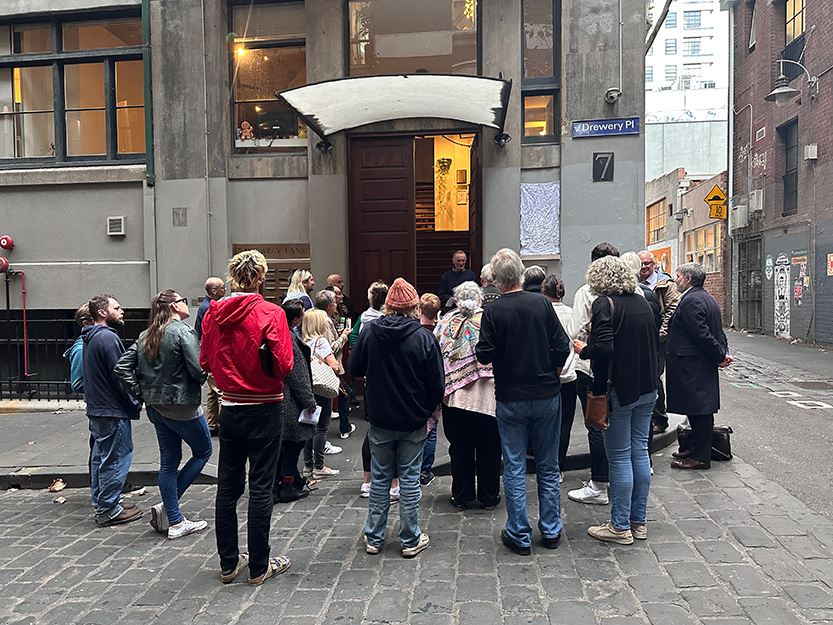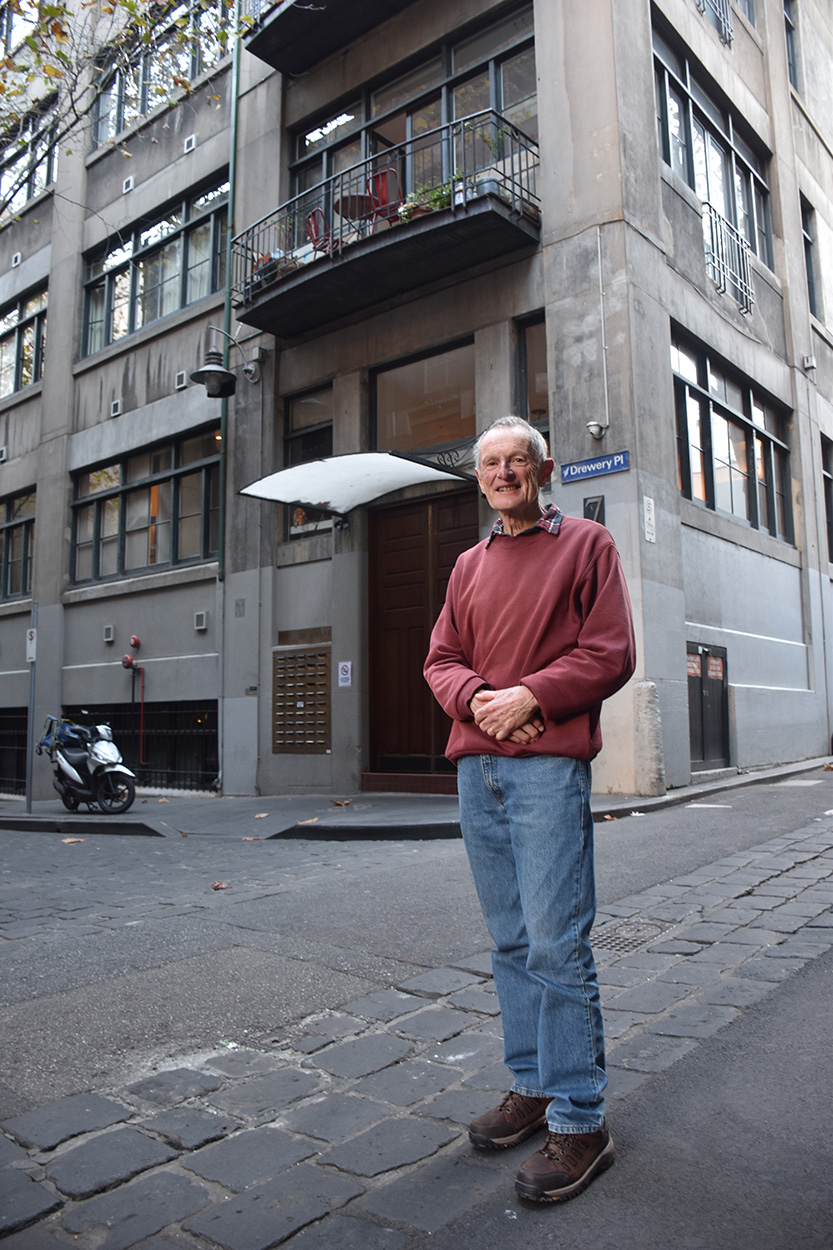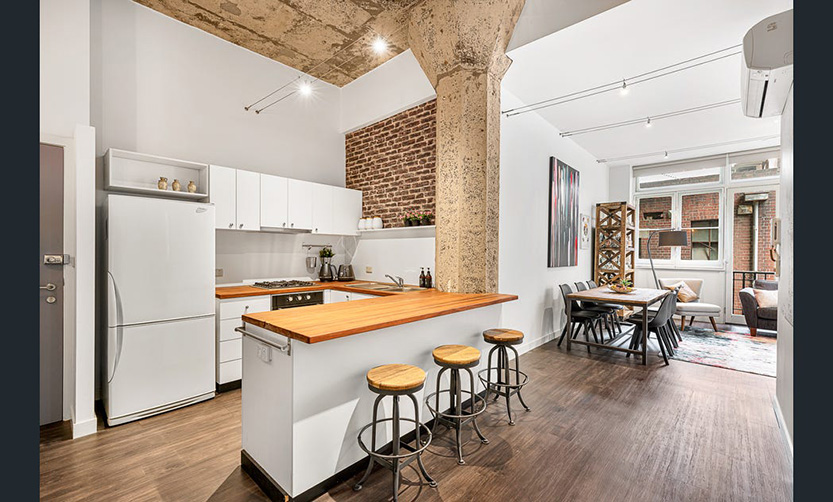Sturdy support for unique CBD building
A trip down memory lane, as laneway building is honoured for its unique engineering heritage.
Many of the CBD’s heritage-listed buildings are recognised for their aesthetic, architectural or cultural value that have played an important role in shaping the history of Melbourne.
For others, though, their unique value isn’t immediately clear from the outside.
That is certainly the case for the Dovers Building, which was recently acknowledged for its unique national importance.
In May the seven-storey building on Drewery Lane was officially recognised as a place of national engineering heritage, as Australia’s first ever building to use a unique form of construction.
Highly respected Australian engineer David Beauchamp unveiled a new plaque in front of various residents and interested locals at the event, and explained why the building was so important.
Back in 1908, tobacco group Sniders & Abrahams — the first Australian company to mass-produce cigarettes — employed engineer and architect Hugh Rawson Crawford to design a new manufacturing headquarters on the site.
Rather than use a conventional slab and beam form of construction for the floors, Crawford decided to use a “Turner Mushroom Slab” system, just a few years old in the US, and which had never been used in Australia.
The system, termed due to the shape of the reinforcement radiating out of the columns, allowed for thinner floors.
Construction was completed by 1910 and scrutiny was naturally high.
“To prove the safety of this new form of construction one panel of a floor was loaded with 38 tonnes to demonstrate its adequacy,” Mr Beauchamp explained in his speech.
Once constructed, women and girls (some as young as 14) worked in the building to hand-make cigarettes and were able earn far more than if they worked as domestic servants, supposedly causing a shortage of servants in Toorak and other affluent suburbs.

A proficient worker was said to make 12,000 cigarettes a week.
By 1914, cheaper machine-made cigarettes became available, which started to cause a decrease in sales.
Two more storeys were added to the building in 1938 (again designed by Crawford, who again used the Turner method) before it was later sold in 1960 to Dovers Printery, which gave it its current name.
In 1996, the building was granted a permit by Heritage Victoria to convert it into 49 apartments by adding an additional floor and balconies.
“This building has a significant place in engineering history, and I am proud to unveil this plaque recognising its national engineering heritage status,” Mr Beauchamp concluded.
Hopefully the building will continue to survive for many years yet.
It is now the third-oldest existing example of its kind in the world.
Ross Ulman, who has owned a Dovers Building apartment since 2000, ensured the event would take place.
“We had a [owners’ corporation] committee meeting a couple of months ago and our building manager said ‘oh, I’ve got a handyman booked for tomorrow morning’ for the plaque,” Mr Ulman told CBD News.
“And I said ‘wait a minute’ because this is a really important and historic building, we need more than just a handyman putting up a plaque. So, I said, ‘let’s have an event’.”
Celebrate they did, cracking open the bubbly and toasting their residence with a hearty chorus of “for it’s a jolly good building”.
City of Melbourne Heritage team manager Tanya Wolkenberg also spoke at the event, detailing the history of Drewery Lane itself which was recently protected as part of the council’s Hoddle Grid Heritage Review.
“It’s lovely to be at an event like this, which shows how valued the precinct is by the resident and business community,” Ms Wolkenberg said.
“Council can only do so much to protect heritage, but having places loved and cared for, used and valued, is the best way to protect heritage places and ensure their ongoing use.”
Mr Ulman said like other CBD buildings, a sense of community was strengthened during COVID-19 lockdowns.
“What’s really made a difference was the pandemic in that, like a lot of places, it brought people together. One of our neighbours set up a WhatsApp group for the building and that’s been phenomenally impressive. About two-thirds of the residents here are on it, and it’s been a really great thing for the building.” •
Captions: Dovers Building resident Ross Ulman, a Turner Mushroom column inside one of the apartments (Picture: realestate.com.au) and residents at the plaque unveiling in May.

A milestone for the mysterious




 Download the Latest Edition
Download the Latest Edition